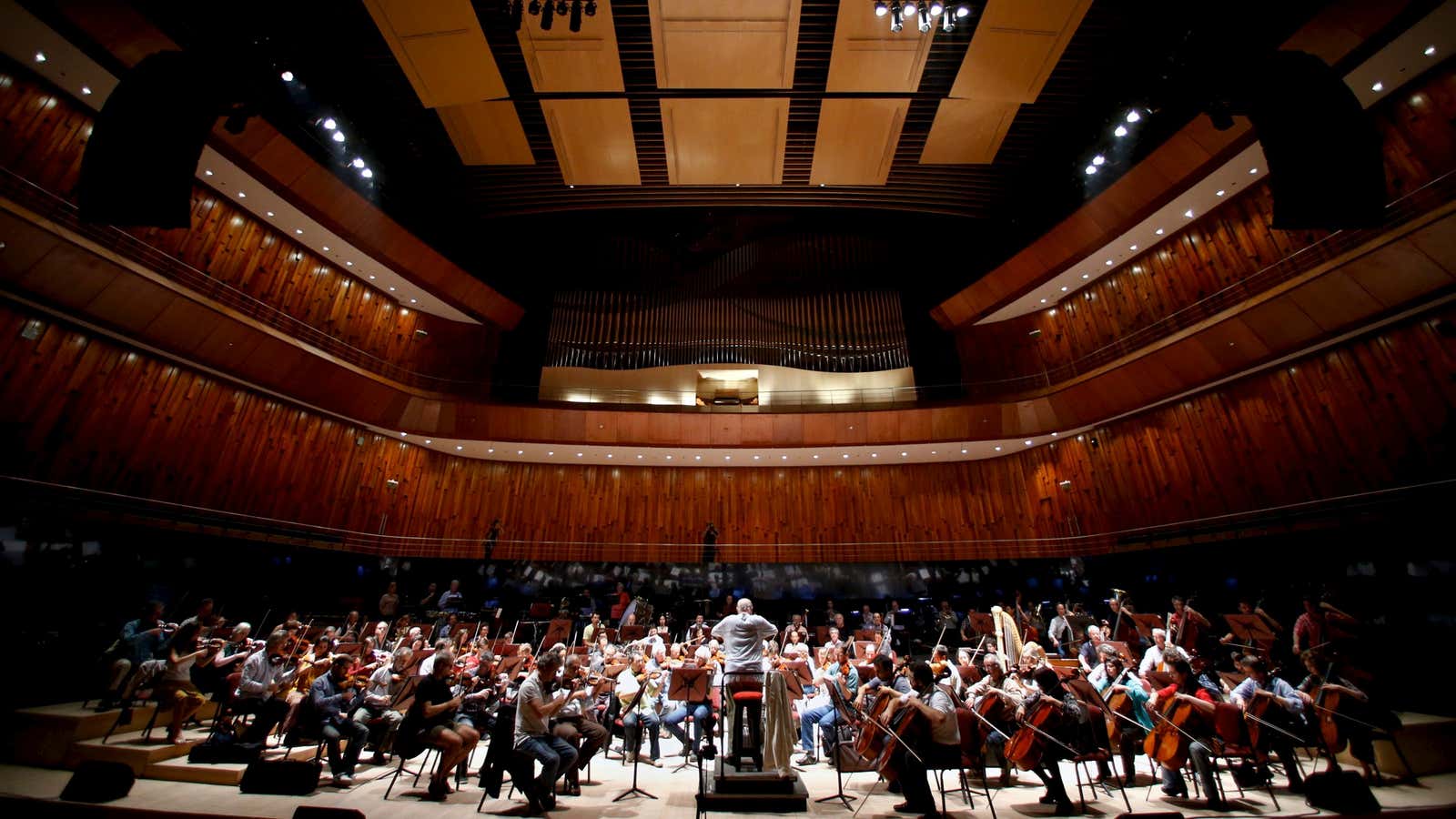The robot revolution has come to classical music composition.
Donya Quick, a lecturer in Yale’s computer science department, has built a computer program that can create music that the university reported has already confused some “music sophisticates” into thinking it was composed by J.S. Bach. Quick’s machine-learning system, which she’s called Kulitta, uses a library of different genres and styles of music as a basis for entirely original pieces of music.
Kulitta is not the first program made to generate music—computer scientist and musician David Cope has been working on software like this for decades—but Quick’s late advisor Paul Hudak previously told Yale that with Kulitta, “you can create sounds that no one’s ever heard before.”
The software works as past music-generation programs have: It can learn the rules of harmony and pitch mapping by analyzing any music fed into it. But Kulitta can also choose to compose music that doesn’t follow the strict rules in classical and jazz styles, as well as combine styles from different genres. Similar to IBM’s Watson, which uses chemical analysis to pair flavors for dishes that humans would not likely think of on their own, Kulitta can transcend genres to create entirely new music. In a demonstration for Yale, Quick asked Kulitta to write a short piece that combined a jazz harmony in the middle of a Bach-influenced chorale. Pleased with the result, Quick told Yale, ‘This might be what Bach would have done if he knew about jazz.’”
Kulitta can create music in seconds that might’ve taken a human hours or days to do. That doesn’t mean the software would ever be able to create the way that Bach did, however. “It’s kind of hard to match the gold standard,” Quick said. ”Bach defined a style, with specific rules. Kulitta will have mistakes, by that definition.”
Quick said she doesn’t envision her software as something that would ever replace human composers, but rather will help them find inspiration in new places. Kulitta can iterate ideas around a theme or style, which a human can pick apart and choose sections from to build their own work, without the man hours required to come up with all those iterations. “You can take the pieces from Kulitta that you’re interested in and make them your own,” Quick said. “People can use this to do what they already were doing, but better.”
Quick is working on a second version of her software that will give Kulitta a wider range of musical knowledge and nuance to draw from. According to Yale, Kulitta may one day even be able to sing—pop stars should start worrying—but Quick said her goal is to combine Mozart and Metallica. “I’d like Kulitta to do a rock symphony, at some point,” Quick said. “That’s my pie-in-the-sky.”
Yale isn’t the only university using computers to challenge what it means to create art. Dartmouth is currently hosting a competition to see if engineers can make programs that can create sonnets, stories, and DJ sets that a human would think were made by another human—like a Turing test for creativity. Perhaps in the future, as we sit in our self-driving cars, reading stories written by robots, we’ll ask Siri to pull Kulitta’s new chart-topping smash hit song, and be very content on our commute into work.
